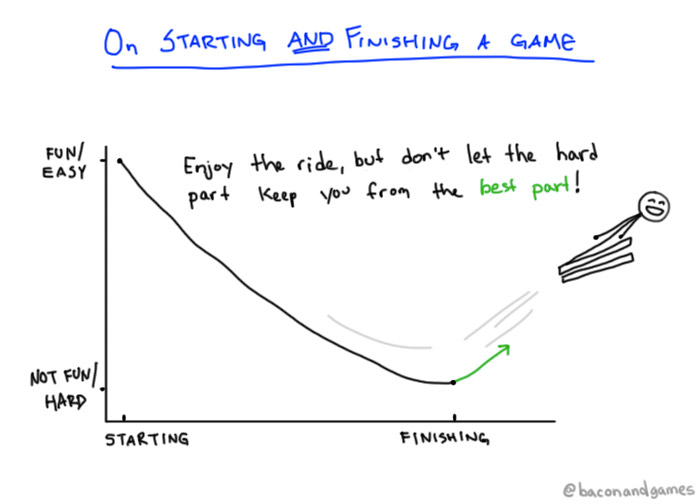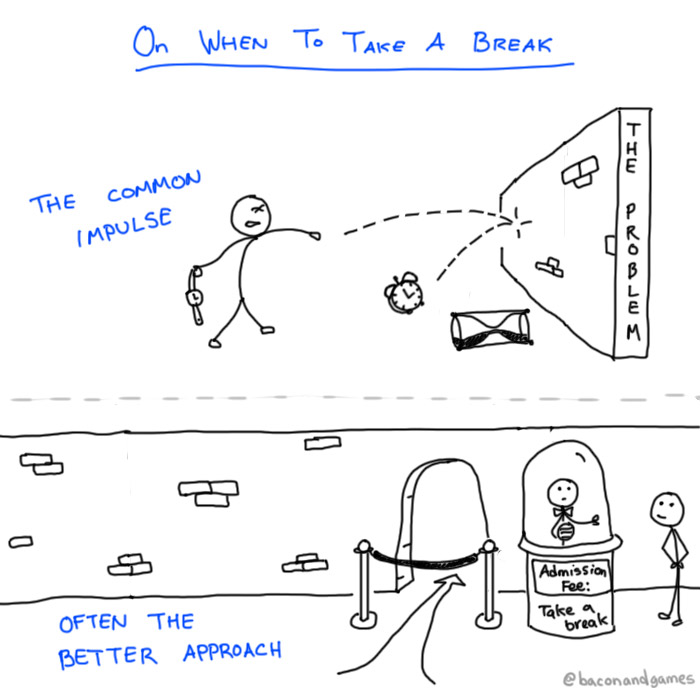Game developers as a group are without a doubt some of the most creative people on the planet. And while I’m sure there are plenty of really interesting and creative game jams going on out there, the majority are carrying the same old formula of “pick a theme and binge code until the buzzer”.
We can do better… and not because I think we have to, just because I think it’d be fun to. So here are 5 game jams I’d like to see:
-
Not My Proto Game Jam
We all have gobs of abandoned prototypes lying around that might be dead ends for us but found gold for others. Why not get together, pass an old prototype to the person on your left and see what it sparks? I’m not suggesting we finish each others’ projects, but it would be fun to see what a seemingly hopeless proto might inspire in another. -
Space Jam (nope, not that Space Jam)
 I studied architecture in college and it was common for us to be asked to find a space on campus, sketch for a bit and then design something inspired by that space. Why not try the same thing with a game jam? We could start the jam off with a nice group meal and then venture out into the world for 30 minutes of inspiration. Maybe the town square looks like a tower defense game to you, maybe you see a physics puzzle game or perhaps end up focusing on a tiny detail that sparks something completely unexpected. If a picture is worth a thousand words, surely a 3D space is worth far more.
I studied architecture in college and it was common for us to be asked to find a space on campus, sketch for a bit and then design something inspired by that space. Why not try the same thing with a game jam? We could start the jam off with a nice group meal and then venture out into the world for 30 minutes of inspiration. Maybe the town square looks like a tower defense game to you, maybe you see a physics puzzle game or perhaps end up focusing on a tiny detail that sparks something completely unexpected. If a picture is worth a thousand words, surely a 3D space is worth far more.
-
Mystery Box Jam
Picture this. Actually, that’s ambiguous. Picture what follows. Every game dev participating in the jam receives a box in the mail with a random object (or objects) inside from another participant. On the day of the jam, everybody opens their box and designs something based on what they find. A variation might be to put a card in the box with a link to your game on it and then forward the box to a new jammer when you’re done. Over time the box would become a living record of games inspired by that object. -
Asset Jam
Each dev is given the same set of art assets at the start of the jam. You can distort, crop or mess with the assets however you choose but you cannot use any additional assets. Seeing how different people interpret and use the art would be very interesting, I suspect. -
Inversion Jam
Take a popular game and have each developer design a game based on a perspective not of the hero. For example, maybe Tetris is the seed and you design a game that involves assembling and deploying blocks. Or Mario Kart gives rise to some sort of Carcassonne-like map building strategy game. I’ve always gotten a lot out of taking something I’ve seen a million times and trying to look at it from a completely foreign angle.
Anyway, I’ve got no discontent for the tried and true game jams but it would be fun to use our creativity to spice up our game jams and not just the games themselves. If you know of any neat jams or have ideas of your own, please leave them in the comments :)




